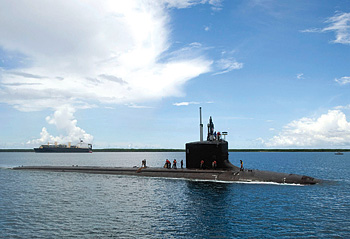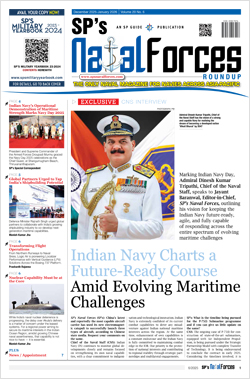INDIAN ARMED FORCES CHIEFS ON OUR RELENTLESS AND FOCUSED PUBLISHING EFFORTS

The insightful articles, inspiring narrations and analytical perspectives presented by the Editorial Team, establish an alluring connect with the reader. My compliments and best wishes to SP Guide Publications.

"Over the past 60 years, the growth of SP Guide Publications has mirrored the rising stature of Indian Navy. Its well-researched and informative magazines on Defence and Aerospace sector have served to shape an educated opinion of our military personnel, policy makers and the public alike. I wish SP's Publication team continued success, fair winds and following seas in all future endeavour!"

Since, its inception in 1964, SP Guide Publications has consistently demonstrated commitment to high-quality journalism in the aerospace and defence sectors, earning a well-deserved reputation as Asia's largest media house in this domain. I wish SP Guide Publications continued success in its pursuit of excellence.
- Global Partners Urged to Tap India's Shipbuilding Potential: Rajnath Singh at Samudra Utkarsh
- All about HAMMER Smart Precision Guided Weapon in India — “BEL-Safran Collaboration”
- India, Germany deepen defence ties as High Defence Committee charts ambitious plan
- G20 Summit: A Sign of Global Fracture
- True strategic autonomy will come only when our code is as indigenous as our hardware: Rajnath Singh
- India–Israel Joint Working Group Meeting on defence cooperation to boost technology sharing and co-development
Strategy
The Third Leg

A nuclear triad is very expensive to acquire and maintain. only three countries—the US, Russian Federation and China—have it and now India is trying to muscle into this exclusive club.
“The triad will be complete once its crucial underwater leg, the country’s first indigenous nuclear submarine aptly named INS Arihant or the destroyer of enemies, is commissioned towards late 2011 or early 2012,” said Chief of Naval staff Admiral Nirmal Verma on the occasion of Navy Day 2010.
The Naval Chief was obviously referring to the nuclear triad which will assist India’s quest to become a regional power. A nuclear triad consists of a nuclear arsenal which is based on land, sea and air. Such a configuration reduces the chances of destruction of the complete national nuclear arsenal in a single strike thereby ensuring a second strike capability and also provides a degree of deterrence. This is very relevant in India’s strategy of no first strike. It also has longer reach and flexibility in employment. A nuclear triad is very expensive to acquire and maintain. Thus only three countries—the US, Russian Federation and China—have it and now India is trying to muscle in this exclusive club. There are other countries that have nuclear capability like Britain, France, Israel, Pakistan, etc, but they do not have a nuclear triad. The triad weapon must have a first or second strike function otherwise it is considered a tactical nuclear weapon.
The essential components of a nuclear triad are:
- Land-based medium-range ballistic missiles or intercontinental ballistic missiles.
- Nuclear powered submarines carrying nuclear ballistic missiles.
- Bombers capable of delivering nuclear tipped bombs or missiles. The bombers can be based on land or an aircraft carrier.
The above configuration allows the most suitable selection of weapons for a strike. Land based are vulnerable to first strike and it is possible to fully annihilate them to prevent the second strike capability. on the other hand, bomber and submarine based nuclear weapons have greater chances of surviving a first strike and then delivering the second strike. Nuclear weapons can also be launched from space; however, they have been banned under the outer space Treaty and the SALT-II Treaty.
Navy—end of the nuclear triad
There are two major components of the sea based triad i.e. a nuclear powered submarine and a nuclear tipped ballistic missile. At present India has none but it hopes to acquire them in the near future.
Nuclear powered submarine
It is obvious that nuclear arsenal carried on a surface ship will be exposed to grave risk of getting detected and destroyed and thus the obvious choice of a platform for it is a submarine. A conventional submarine uses a diesel engine which needs air for moving on the surface and battery powered electrical motors to move subsurface. Due to limited battery life, conventional submarine can stay submerged for a few days only, during which it can maintain high speed for a few hours and for the remaining portion it can move at slow speed. A nuclear submarine is powered by nuclear energy and can remain underwater for several months.





